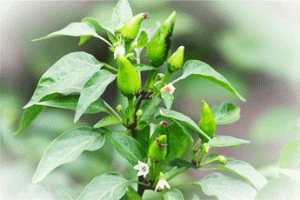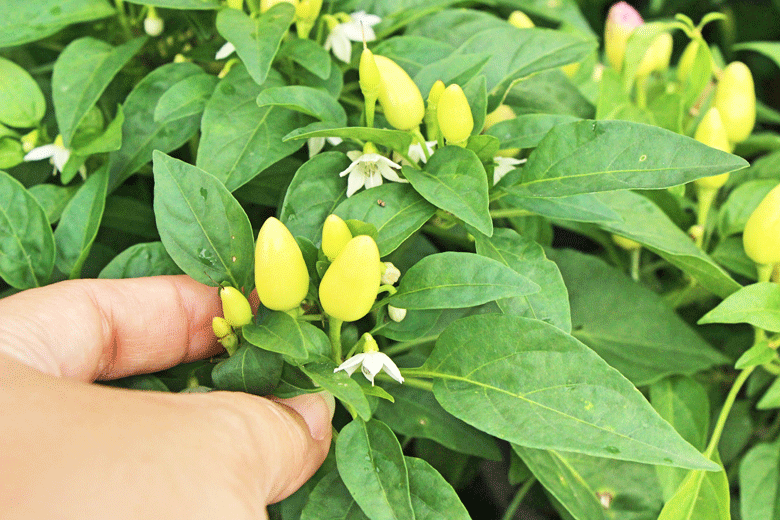Improving yields
At this point in the season, some of my plants have started flowering. It is at this point that I change my fertilisation regime to help my plants make the transition from vegetative growth to the all-important fruit set stage.
An essential element for this stage is phosphorous. Phosphorus, along with nitrogen and potassium, constitutes one of the three primary nutrients that plants require for optimal growth. Its significance lies in its vital role in various plant processes, including energy transfer, photosynthesis, and the synthesis of DNA and RNA. However, when considering chilli plants and their flowering stage, phosphorus takes centre stage due to its specific importance.
phosphorus takes centre stage due to its specific importance.
During the flowering phase, chillies undergo a remarkable physiological transformation. They redirect their resources from leaf and stem development towards the production of captivating flowers, which ultimately give rise to the formation of delectable fruits. This transition necessitates an ample supply of phosphorus to support the intricate metabolic processes involved in flower initiation and development. Phosphorus acts as a key player in the biochemical reactions responsible for the formation of floral structures, including the differentiation of reproductive tissues and the generation of vibrant petals.
Furthermore, phosphorus plays a crucial role in regulating the timing and intensity of flowering in chilli plants. It influences the expression of flowering-related genes and the synthesis of floral hormones, thereby influencing the plant’s ability to undergo successful flowering.
 Root development
Root development
Phosphorus promotes strong root development, which is crucial for efficient nutrient uptake and overall plant health. When chillies receive an ample supply of phosphorus, their root systems become more robust and capable of absorbing water and essential nutrients from the soil. This nutrient uptake supports the overall growth and development of the plant, including the formation of buds and flowers.
Moreover, phosphorus influences the production of proteins, enzymes, and hormones that regulate various physiological processes in chillies. Flowering is a complex process controlled by plant hormones, and phosphorus aids in the synthesis and activation of these hormones. It encourages the plants to allocate their energy towards flowering and fruit production.
To ensure that your chillies receive sufficient phosphorus, it’s crucial to provide them with a well-balanced fertilizer or nutrient solution. Look for a fertilizer with a higher middle number in the N-P-K (nitrogen-phosphorus-potassium) ratio, indicating a higher concentration of phosphorus. You can choose organic or synthetic fertilizers, depending on your gardening preferences.
Remember that applying too much phosphorus can be counterproductive and even harmful to your plants. It’s important to follow the recommended dosage mentioned on the fertilizer package or consult gardening experts for guidance. Overapplication of phosphorus may lead to nutrient imbalances, inhibit the uptake of other essential nutrients, and harm the environment.
In conclusion, phosphorus plays a pivotal role in promoting the flowering stage of chilli plants. It aids in root development, nutrient absorption, and the activation of hormones that drive flower formation. By providing your chillies with the right amount of phosphorus, you can encourage healthy growth, abundant flowering, and ultimately, a bountiful harvest of fiery, flavourful chillies. Happy gardening!

